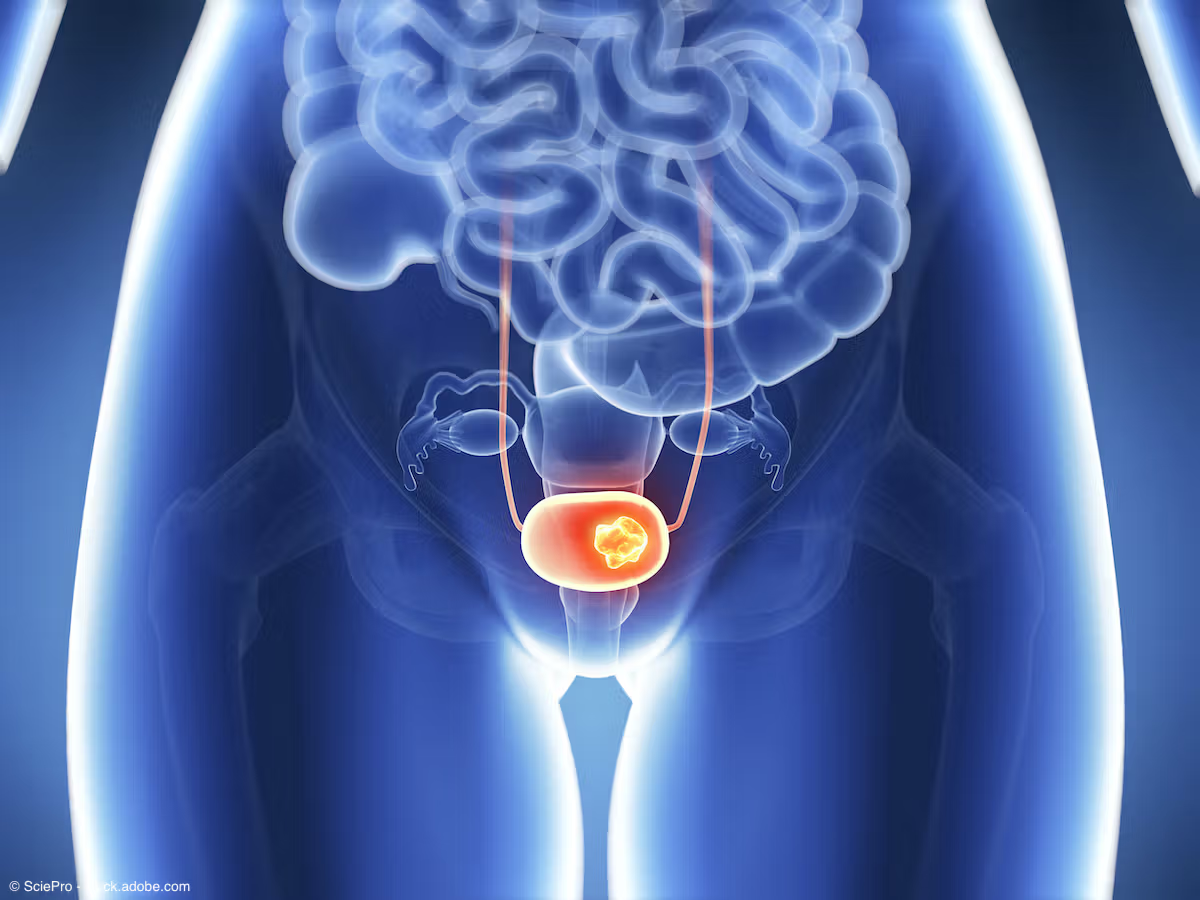News
Article
Genomic subtyping may help predict clinical outcomes in bladder cancer
Author(s):
Key Takeaways
- The Decipher Bladder test helps identify aggressive bladder cancer by analyzing tumor molecular subtypes, guiding treatment decisions for neoadjuvant chemotherapy.
- In a study of 226 patients, luminal tumors showed lower rates of upstaging to nonorgan confined disease and better survival outcomes compared to nonluminal tumors.
In total, 28% of patients with luminal tumors and 41% of patients with nonluminal tumors experienced upstaging to nonorgan confined disease.
The Decipher Bladder genomic subtyping classifier demonstrated the ability to identify patients who are more likely to harbor aggressive bladder cancer based on their tumors’ molecular subtype.1
Patients with luminal tumors also demonstrated improved overall survival.

The data were published in European Urology Open Science.
“Accurate clinical staging in bladder cancer can be challenging, limiting clinicians’ ability to guide treatment decisions for their patients,” said senior author Yair Lotan, MD, professor of urology and chief of urologic oncology at UT Southwestern Medical Center in Dallas, Texas, in a news release on the findings.2 “Our findings suggest that molecular subtyping information provided by the Decipher Bladder test can help clinicians better identify which patients may benefit from more intensive treatment with neoadjuvant chemotherapy and which will not and can thus avoid its toxicity.”
In total, the study included 226 patients, of whom 134 had high-risk clinically non-muscle invasive bladder cancer (cNMIBC; cTa/Tis/T1) and 92 had muscle invasive bladder cancer (MIBC; cT2). Patients received testing with the Decipher classifier prior to undergoing radical cystectomy without neoadjuvant chemotherapy.
Decipher testing identified 138 patients with luminal tumors and 88 patients with nonluminal tumors. Overall, 33% of patients experienced upstaging to nonorgan confined disease, which included 19% of patients with cNMIBC and 53% of patients with cT2 disease. Additionally, 17% of patients had positive lymph nodes at radical cystectomy, which included 9% of patients in the cNMIBC arm and 28% of patients in the cT2 arm.
The rate of upstaging to nonorgan confined disease and to MIBC was generally lower among those with luminal tumors.
In total, 28% of patients with luminal tumors and 41% of patients with non-luminal tumors experienced upstaging to nonorgan confined disease (P = .04). According to the authors, this finding was significant on univariable analysis but “was not independently significant after adjusting for clinical variables.”
In the cNMIBC arm, 16% of patients with luminal tumors vs 26% of patients with nonluminal tumors were upstaged to nonorgan confined disease. In the cT2 arm, 56% of patients with luminal tumors vs 51% of patients with nonluminal tumors were upstaged to nonorgan confined disease.
Further, 32% of patients with luminal tumors were upstaged to MIBC from cNMIBC compared with 51% of patients with nonluminal tumors (adjusted odds ratio, 2.49; 95% CI, 1.09-5.72: P = .03). Multivariable analysis showed that nonluminal tumors were significantly more likely to be upstaged to MIBC.
At a median follow-up of 33 months, patients with luminal tumors also demonstrated improved overall survival on multivariable analysis compared with those with nonluminal tumors (HR, 1.67; 95% CI, 1.01-2.78; P = .05). At 36 months, 79% of patients with luminal tumors vs 66% of patients with nonluminal tumors were free from a survival event. The data showed a larger survival difference within the cT2 cohort.
Based on these findings, the authors concluded, “Molecular subtyping in cNMIBC suggests that luminal tumors harbor less aggressive disease, as reflected by lower rates of pathological upstaging to MIBC and/or pN+. In addition, in MIBC, luminal tumors were associated with favorable outcomes with [radical cystectomy], even in the absence of systemic [neoadjuvant chemotherapy], validating previous findings.”
References
1. Jong JJD, Proudfoot JA, Daneshmand S, et al. Molecular subtyping for predicting pathological upstaging and survival outcomes in clinically organ-confined bladder cancer patients undergoing radical cystectomy. Eur Urol Open Sci. 2025;73:24-30. doi:10.1016/j.euros.2024.12.009
2. New study shows Veracyte’s Decipher Bladder Test predicts disease upstaging in patients with bladder cancer. News release. Veracyte Inc. February 5, 2025. Accessed February 5, 2025. https://investor.veracyte.com/news-releases/news-release-details/new-study-shows-veracytes-decipher-bladder-test-predicts-disease




